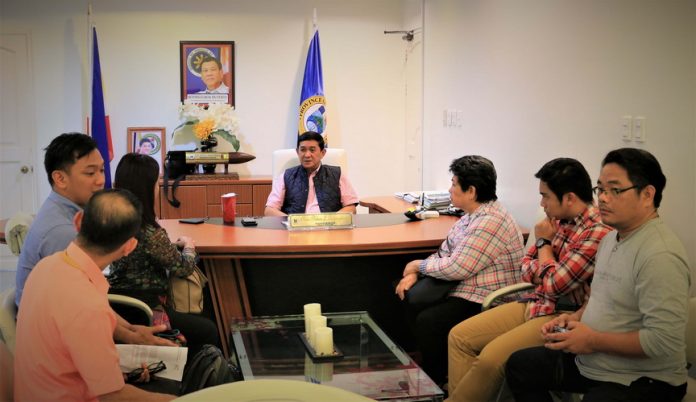Pushing for further development and global competitiveness for the entire island of Mindanao, a composite team from Mindanao Development Authority (MinDA) and USAID Compete Project met with the heads of the Provincial Government’s key offices to discuss the province’s laid-out plans on infrastructure development.
During the meeting on February 16 at the Provincial Capitol, Lydia Martinez, Team Leader of the Compete Project, said that they are looking at the infrastructure plans and investment potentials of the different provinces, touted to boost development in Mindanao.
The team has been in a series of visits in different provinces in Mindanao to study the viability of their infrastructure development plans for inclusion in the blueprint of the Mindanao Development Plan, where in enhanced connectivity is identified as a major enabling factor to boost economic and investment potentials.
The team said the study is part of the program’s thrust to provide technical assistance to enhance viability of infrastructure programs. They said that they are eyeing strategic areas potential for the development of airports and seaports that are touted to advance Mindanao’s trade and economic growth. The team said that conducting this study would help the government strategize and prioritize projects in order to make sure that its investments would not go down the drain.
Presenting the policy directions of the Provincial Government, Provincial Planning and Development Coordinator Freddie C. Bendulo showed the proposed plans of the province to build ports as well as roads that will greatly support the development of the province’s economic and tourism industries.
“Davao Oriental, as part of the southeast Mindanao Corridor, has an immense potential to contribute in the overall development of Mindanao,” he said.
Ednar G. Dayanghirang, Chief of Staff at the Provincial Governor’s Office, emphasized the need for infrastructure development not only in the town centers but as well as the hinterlands. He suggested putting up more farm-to-market roads to help the marginalized communities in the upland villages in transporting their goods. He considered these roads as crucial to these far-flung villages as it would help cut the expensive transportation cost. “We are an agricultural province and most of our constituents are farmers living in upland villages. I think we should also focus of putting up investments in these marginalized areas,” he said, saying the strategy would not only help curb poverty but would also decrease the incidence of insurgency.
He also suggested the inclusion of ancestral domains in the infrastructure development plan as these areas are usually located farthest from the town centers and often requires more support in terms of development.
Governor Nelson L. Dayanghirang stressed the province’s need to further develop the province’s tourism value-chain to support the already established world-class tourism destinations. He said that tapping funding support from agencies to put up key infrastructure facilities will help the province prop up its emerging tourism industry, thus, providing livelihoods and incomes to the province’s poor constituents. (Karen Lou Deloso/PIO DavOr)







